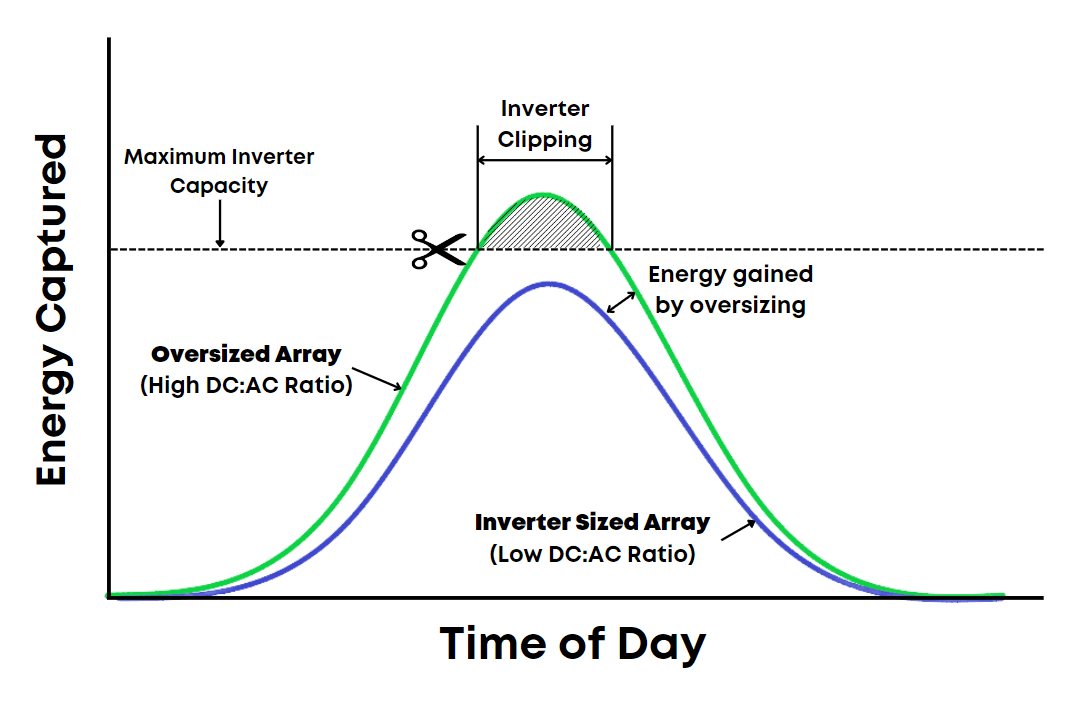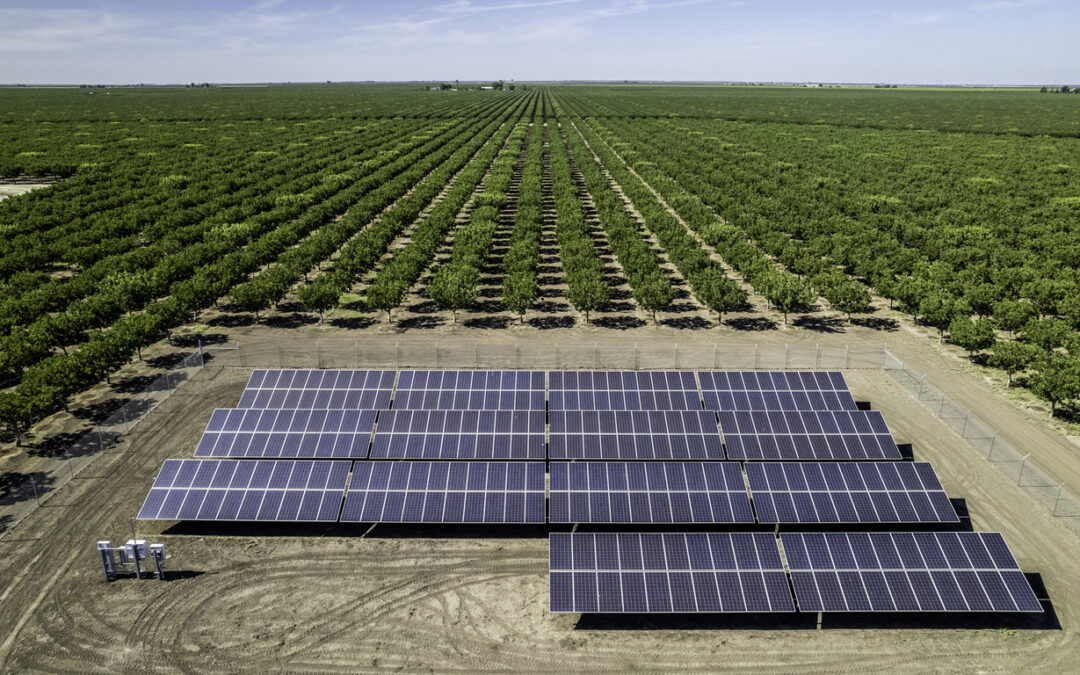It may seem counterintuitive to buy more solar than you need; particularly when one of the main benefits of switching to solar energy is centered around saving money. But as odd as it sounds, oversizing your solar array is the best investment. An oversize array will deliver the maximum amount of energy at the lowest possible cost to you. Allow us to explain:
The Role of a Solar Inverter
Let’s get back to basics: solar panels produce DC electricity, which passes through a solar inverter that inverts it to AC electricity. AC electricity is what powers your home or business.
All solar arrays need an inverter, and inverters each have their maximum capacity – that is, the maximum amount of DC electricity it can invert at one time. The “DC-AC ratio” refers to your solar array size (DC) relevant to your inverter capacity (AC). For maximum production, DC-AC ratio over 1 is preferred.
When you think about how the sun travels through the sky in a single day, it makes sense that your solar panels will capture less sunlight in the mornings and evenings when the sun is low in the sky, and more sunlight in the afternoon when it’s shining overhead. The afternoon hours are considered “peak” production times.
A larger array of solar panels captures more DC electricity and therefore generates more AC electricity during the mornings and evenings, or off-peak times. During peak sunlight hours, your array may produce more DC power than your inverter can convert to AC – so the extra DC power is lost, or “clipped.”
You would naturally think that if your array is capturing more electricity than it can invert to usable energy, this just means your solar array is too big for your needs, right? Wrong!
What is Solar Inverter Clipping?
Clipping refers to moments when your array is collecting more DC energy than it can invert, and some energy is lost. It is healthy for an array to clip during peak hours, when the sun is strong and perfectly overhead. Prime conditions don’t often last long, so sizing your array to clip will enable it to perform better throughout the day and the various sun conditions throughout the year.

Check out the bell curve image above. The blue line represents a perfectly matched solar array size (DC) to its maximum inverter capacity (AC). The green line represents an oversized solar array relative to its inverter capacity.
The blue line never hits its maximum inverter capacity, so while no energy is lost to inverter clipping, less energy is generated overall. This means that during periods with less sunshine, there’s more chance your solar generation will not fulfill your complete energy needs and you will require additional energy from the power grid.
The green line DOES exceed the maximum inverter capacity, and that excess energy is clipped, represented by the shaded area above the inverter capacity line. However, the green line generates more electricity overall – You can see that it captures and inverts more electricity beginning earlier in the day and later into the evening than the blue line, because the inverter can reach its AC capacity earlier in the day and continue to operate at maximum output for longer periods. The energy that is gained from having a larger array is greater than energy lost during peak hours from inverter clipping.
Solar Power is in Permanent Flux
A solar array catches the most sunlight at peak daylight hours and less during the morning and evening. But exactly how much energy it captures will vary every single day.
A solar panel’s performance is dependent on several variables – such as temperature, weather patterns, seasons, exposure to shade, panel age, even a squirrel scurrying across your roof or your resident woodpecker investigator. Oversizing allows you to reduce the effects of these variables, as the added modules will make up for everyday energy losses. Capturing more energy during off-peak hours ensures your inverter will hit its AC capacity for longer periods – generating significantly more electricity in the process. And that’s not all…
Financial Incentives for Businesses
There are often federal incentives for businesses to reduce their electric use during times of peak demand, which is typically during business hours. An oversized solar panel array will typically produce enough electricity to reduce or eliminate the need for additional energy from the grid during those peak hours. Xcel Energy will pay businesses an extra incentive if they are supporting a large amount of their own electric load with solar during peak hours through PV Demand Credit.
Lastly, growing your system’s DC capacity by adding more panels while staying within your inverters capacity is very cost effective and can help to lower your price per watt, providing businesses with greater certainty around their energy costs. The Federal Investment Tax Credit (ITC) and Production Tax Credit (PTC) provide further incentives to spend on solar panel installations to lower long-term energy costs. (The full details are laid out in our Inflation Reduction Act blogpost).
Here at Cedar Creek Energy – Minnesota’s premier solar energy provider – we design the solar panel installation which works best for your home and your business. Get in touch today, and we can answer all your questions about oversizing, inverter clipping, what’s right for you, and more!

